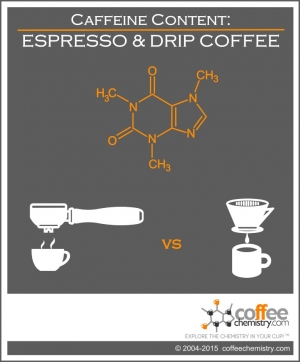Ask almost anyone and they will likely say that espresso has way more caffeine than regular drip coffee. This assumption makes a perfect sense. What else would explain the buzz we get when we down a shot of espresso in the morning?
Interesting, but is this correct? Well, that depends on your perspective...
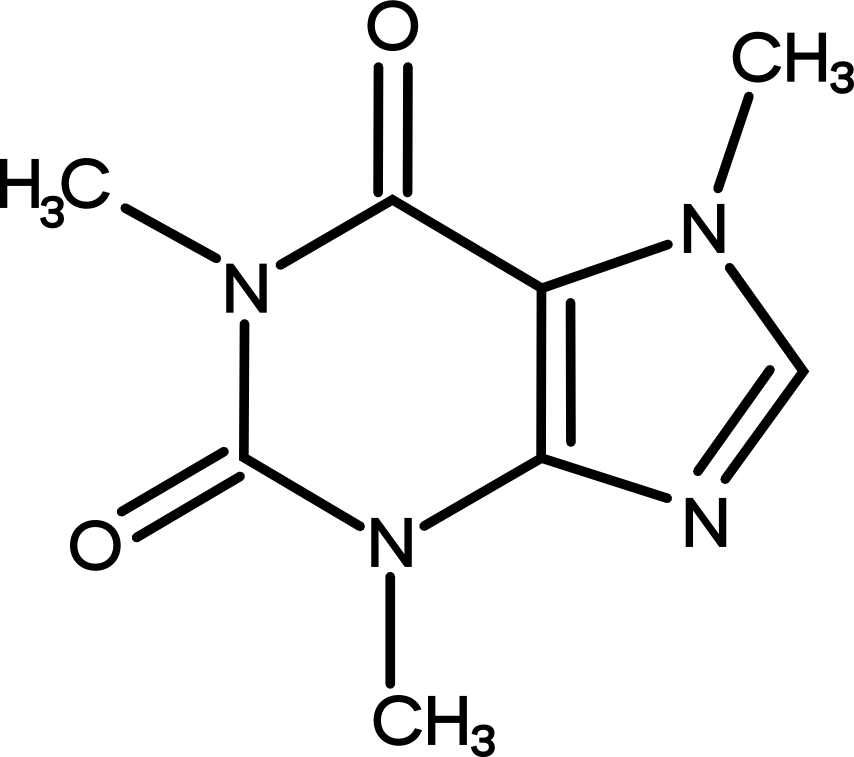
During the 1950's a typical serving size of coffee was between 4 to 6 fl oz (118-177mL), but over the years our "cup" size has grown almost eight times since. Starbucks' smallest cup ("short") is 8oz, while their largest cup ("venti") is about 20-24oz.
But in 2011 Starbucks topped it by introducing the "trenta" which measured in at a whopping 31oz of coffee. Yes, folks, almost a quarter-gallon of coffee!
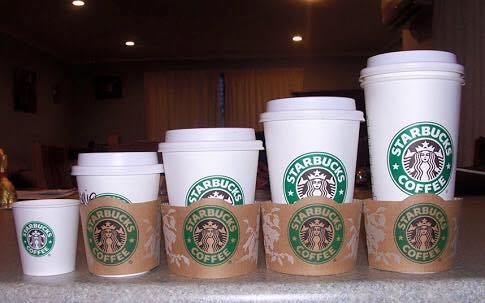
Starbucks Serving Size (photo credit - Benita Theda)
short (8oz/236ml), tall (12oz/354ml), grande (16oz/473ml), venti (hot, 20oz/591ml), trenta (31oz/916ml)
How much caffeine is in my cup of coffee?
According to the National Coffee Association (NCA), a typical cup of drip coffee (8oz) contains approximately 65-120 mg of caffeine. With such a wide variation in caffeine content, its very difficult to assess how much caffeine you are consuming from a typical cup of coffee. But why such a large variation?
Without getting overly technical, there are several factors to consider when brewing coffee. Factors including as coffee type, grind size, brew time, dwell time, water temperature, roast level, blend, etc., all have a significant impact on the final extraction of caffeine. But more on this later.
Now, if we look at the level of caffeine contained in a typical cup of drip coffee and espresso, those figures come in at about 92.5 mg and 40.0 mg, respectively. Remember these are averages, so the exact amount will vary based on coffee establishment.
As you can clearly see drip coffee with approximately 92.5 mg contains a larger concentrations of caffeine than espresso (40mg) - how much more? On average about 2.3x more!
So there we said it - drip coffee has MORE caffeine than espresso! Case closed, go home, right?
Well, not exactly!!
Comparing Espresso to Drip Coffee
The problem with this type of comparison is that we are not comparing "apples to apples".
A more correct approach would be to compare the two beverages in terms of their caffeine concentration per ounce (oz).
In the case of drip coffee, we need to divide the 65-120 mg of caffeine by its serving size (8oz), resulting in a caffeine concentration of approximately 8.1 - 15 mg/oz. That means that for every ounce of coffee solution we can expect about 8.1-15 mg of caffeine present.
Whereas in espresso, even though we start off with about a 1/2 to 1/3 less caffeine, remember all this caffeine is contained in just 1 oz of liquid or expressed numerically as 30-50 mg/oz.
In other words, in just 1 oz of espresso solution we get about 30-50 mg of caffeine in solution.
So What Does All This Mean?
Although we can conclude that drip coffee has at least 2x more caffeine than espresso, we need to consider that this is due to much larger serving size - that's all!
So in a nutshell, we can summarize as follows:
From a beverage perspective, since espresso is served in much smaller volumes, we get less caffeine.
But from a volume perspective, espresso has much more caffeine than drip coffee due to its higher concentration of solubles in that 1oz of coffee.
Conclusion: Espresso vs Drip Coffee
So, what's the verdict?
Does espresso really have more caffeine than drip coffee?
Well, again the answer depends on your perspective. If we look at this issue from a:
- beverage perspective -> drip coffee has more caffeine
- volume perspective -> espresso has more caffeine
The following images below show what you consume when you purchase either an espresso (~1oz) and a standard cup of coffee (8oz). That is, if you consume an espresso you'll take in about 30-50mg of caffeine, while a drip coffee about 65-120mg. Of course, these are simply averages, but you get the gist.
Caffeine Content in Drip Coffee (8oz) vs Espresso (1oz)*
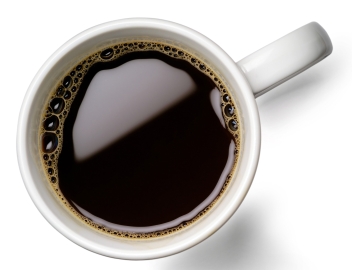 |
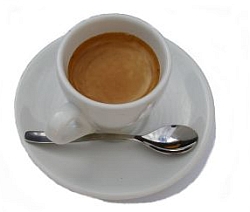 |
| 65-120mg (BP) | 30-50mg (BP) |
| (8-15mg/1oz) (VP) | (30-50mg/1oz) (VP) |
*(BP) = beverage perspective, (VP) = volume perspective
Why Do People Believe Espresso Has More Caffeine Than Drip Coffee?
Well, part of the reason this belief has continued to exist is because caffeine itself is an intensely bitter compound. Since espresso is roasted at a much darker roast, which creates a higher concentration of 'bitter' molecules - the logical "connection" would seem correct - but it is in fact incorrect.
The bitter compounds that arise from darker roasts are not due to caffeine, but rather bitter compounds created during the Maillard reaction.
It is this much lower concentration of caffeine (per serving) in espresso that allow Italians to drink upwards of 5 to 10 espresso's per day without getting overly jittery. Try drinking a dozen 12 oz cups of drip coffee and you'll likely end up with a visit to the hospital from excessively high levels of caffeine in your system.
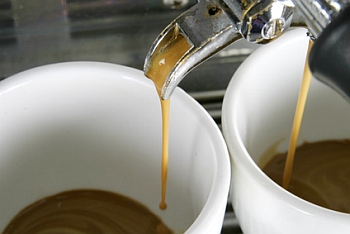
Unfortunately it is very difficult to "standardize" the caffeine of coffee beverages since numerous variables need to be considered, including:
- Beverage Size - are we comparing a cup at 4oz, 5oz, 12oz or 24oz?
- Blends - many roaster create their own blends of various beans each with subtle difference in caffeine content
- Bean Type - is the blend 100% arabica, robusta or both?
- Grind - was the coffee prepared with a fine grind, ultra fine grind, coarse, etc? (a hand sieve can be used to measure ground particle size)
- Water Temperature - was the coffee prepared with the recommended 195-205°F temperature range?
- Milk - was milk added or not - as this will dilute the caffeine content
- Others - machine type, dwell time, etc.
All these factors make the calculation of caffeine in coffee beverages a real challenge. Hopefully, with the implementation of industry standards by trade organizations, we can begin the journey towards creating more standardized cups of coffee in our industry.
Want to learn more? Follow us on Twitter and Facebook for the latest coffee science information or sign up for our Newsletter.




